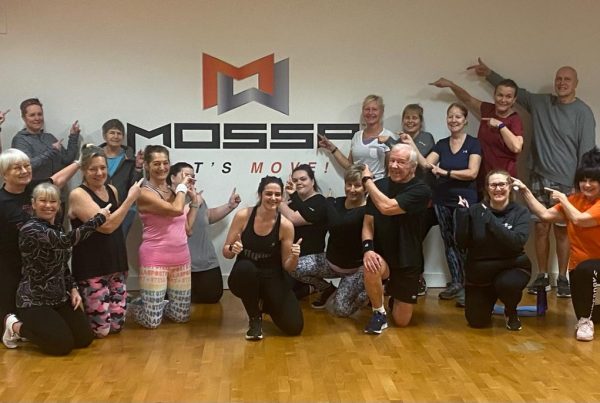Thirty years ago, a city group X instructor could be paid £30 a class. How does this compare to what you earn today? We delve into the murky world of instructor pay and ask members of our industry whether they think you are being paid enough. And if not, why not? And what can be done about it?
The Group Fitness in Europe 2020 report from Europeactive stated that the average instructor pay in the UK is £21.55 per hour. According to EMD UK, this figure has remained widely the same for the last 10 years. In 2015, EMD UK conducted research that showed cities pay more than rural areas, and England pays more than other home nations as an annual income.
Marcus Kingwell, CEO of EMD UK, believes that group exercise is undervalued across the fitness sector, health sector and in our communities. This is often highlighted in the membership sales process in facilities focusing on gym, swim or rackets memberships, rather than people. He says, “Exercise classes are seen (and often sold) as something you get for free as part of your membership. This immediately devalues them in the consumer’s eyes. This then makes it difficult to demonstrate the value of the studio team to the organisation, which is often represented in instructor pay. Additionally, it hides the hours of prep required for each class with lesson plans, preparation of choreography and music playlists, as well as regularly attending training to remain up to date with current trends.”
The IHRSA Health Club Consumer Report (2016) shows that nearly half of club members (47.5%) participate in group exercise, which in turn drives a significant part of membership sales. Marcus is quick to point out that many members, especially women, join gyms for the classes. “So good instructors should be seen as valuable assets for both recruiting and retaining members,” he says, “but you will only develop good instructors if the pay and prospects are good too. Group exercise needs to become the central part of the business as a membership and put at the forefront of services provided.”
So, why do group X instructors appear to be undervalued?
Helen Carpenter Waters, owner and director of DYBO Health and Fitness & Academy, has seen a drop in wages affecting instructors she knows. Recalling being paid £35 per hour over 25 years ago, she tells us, “Many instructors have had no pay increase over the past 10 years and certainly nothing significant or in line with inflation for decades.”
She continues, “Many clubs have franchise products and virtual class offerings, which require fewer independent/freelance teachers, and freestylers are seen as expensive and difficult to replace or cover. More knowledgeable and experienced instructors are not paid more or valued more. The pandemic has resulted in many instructors losing their jobs, leaving the industry or setting up on their own. I applaud colleagues such as Lincoln Bryden and Ann-See Yeoh for helping instructors with marketing ideas and strategies via their Facebook pages, in order to assist fellow fit pros during this time.”
The pandemic has, sadly, meant the end of the road for many instructors. Graeme Hinde is the founder of LFX, a networking platform that brings together fitness professionals. He has heard “heart-breaking stories” in the last two years. He tells us, “With the pandemic, the majority were left to fend for themselves with no contracts of employment and so have found work in other sectors. So, whilst some refer to instructors as rock stars, they aren’t often treated as such. Uncertainty is now the big, dark cloud that is frightening a lot of people and so they too will probably have to look at alternative employment in other sectors. Once we have lost them they won’t return, so yes, the problem is huge.”
Marcus agrees that the pandemic has had a huge effect. “Post lockdown, many instructors have had their classes reduced by operators or have been placed on zero-hour contracts, resulting in lower take-home pay than prior to the pandemic and less legal rights,” he points out. “Of course, operators have had a tough time but it’s frustrating for instructors given that online classes kept clubs going through the darkest days of the pandemic.”
For self-employed instructors, the prospect of a standard pay rise every April is unlikely. However, Lynn Wilson, Health and Fitness Manager, has seen experienced self-employed instructors negotiate individual increased pay terms, if they have a good reputation and relationship with the company they work for. “However,” she points out, “this does pose issues, as inevitably other instructors find out and this creates a divide in the team.”
She adds, “Instructor pay is not consistent with experience and demonstrated learning. Instructors are traditionally only judged on ‘bums on seats’. We know full studios are a business essential; however, their social value is not to be underestimated.”
When it comes to ‘bums on seats’, this seems to be a sore point. Helen adds, “Instructors deserve more, particularly when they are well trained, qualified, experienced and professional (as opposed to paying them more for bums on seats)! We need great teachers to bring on the beginners, less mobile and the specialist populations, which are not usually the easy-to-fill sessions. An industry-wide initiative and monitoring agency (e.g., union) is needed.”
Are you talking about it?
So, are you talking about the problem of low instructor pay? Are you making your voices heard? Marcus says that you are. “There is continual talk on social media about low pay and there are many instructors who are still waiting for payment from before the pandemic started,” he says. “In a recent CIMSPA survey, over 30% of employers reported a shortage of group exercise instructors, and low pay is a key factor in this.”
While Lynn believes that instructors are “demoralised by this issue of pay and have been for some time”, she doesn’t hear employers/clubs talking about it. She says, “Unfortunately, there is always a misconception that self-employed freelancers ‘have another job’, are ‘off every afternoon’ or, as they are self-employed, are generally financially ‘better off with better hours’. This is not the case! My impression is that they feel helpless and do not have a ‘body’ to officially drive this agenda in the industry. Not only are instructors feeling the pressures of normal rising living costs, but they feel undervalued with the outstanding and vital service they offer, which positively affects sales and, overwhelmingly, retention.”
Is there a solution?
So, what can you do if you don’t feel you are being paid enough?
Marcus believes it’s worth having the conversation with your employer if you feel you are not being paid fairly. He advises, “I would recommend that instructors gather as much information as possible about their qualifications, training, class numbers, participant feedback and so on, and present this as part of an open conversation with their line manager. Make the business case and show how your participants are contributing to the income of the whole facility. The most powerful information is participants saying that they pay their monthly membership because of the classes you teach.”
He continues, “If they don’t receive a satisfactory outcome, they should take this higher than their line manager to club manager/regional and, if still not satisfied, then look for work elsewhere. But always try to resolve in-house first and never discuss pay front of the customers. Be professional and take the high ground.”
Graeme feels that, if you are able to, you should take your destiny into your own hands. “Go freelance, rent space or go online and be responsible for your own future,” he suggests. “If you are not able to due to personal circumstances, then please make sure you speak up for yourself and gain the respect of those who ‘employ’ you.”
Lynn is also keen to point out the importance of knowing your value and worth as an instructor. “If instructors could come together and push as a collective that would be ideal. However, not everyone is in the financial/personal position to fight the fight. Therefore, you would hope this would be raised by a governing body; however, which governing body has the clout to drive the issue?”
Marcus feels the responsibility for driving change is a joint one, between a governing body and the instructors themselves. He explains, “EMD UK, as the national governing body for group exercise, has a lead role in raising this issue with operators and presenting the business case. Operators have responsibilities to their staff, their local communities and their stakeholders. And instructors have responsibility to develop their own skills, keep up to date and not put up with poor pay and conditions.”
To help address the issue, EMD UK is currently developing a pay matrix for employers to use as a guide for instructor pay, linked to experience and continued learning. In broad terms, the matrix suggests three pay bands for freelance instructors and provides a tool for scoring them on criteria such as qualifications, CPD, member feedback, reliability and experience.
Graeme is philosophical in his conclusion, “I think it will take a new kind of fitness business leader to transform the tired old model of instructor pay. Some people may take offence to my comments but who would have thought the traditional taxi service would face a challenger like Uber? Sometimes it takes a new way of thinking to radically change things.”
So, what are your thoughts? We’d love to hear from you over on our social media.







